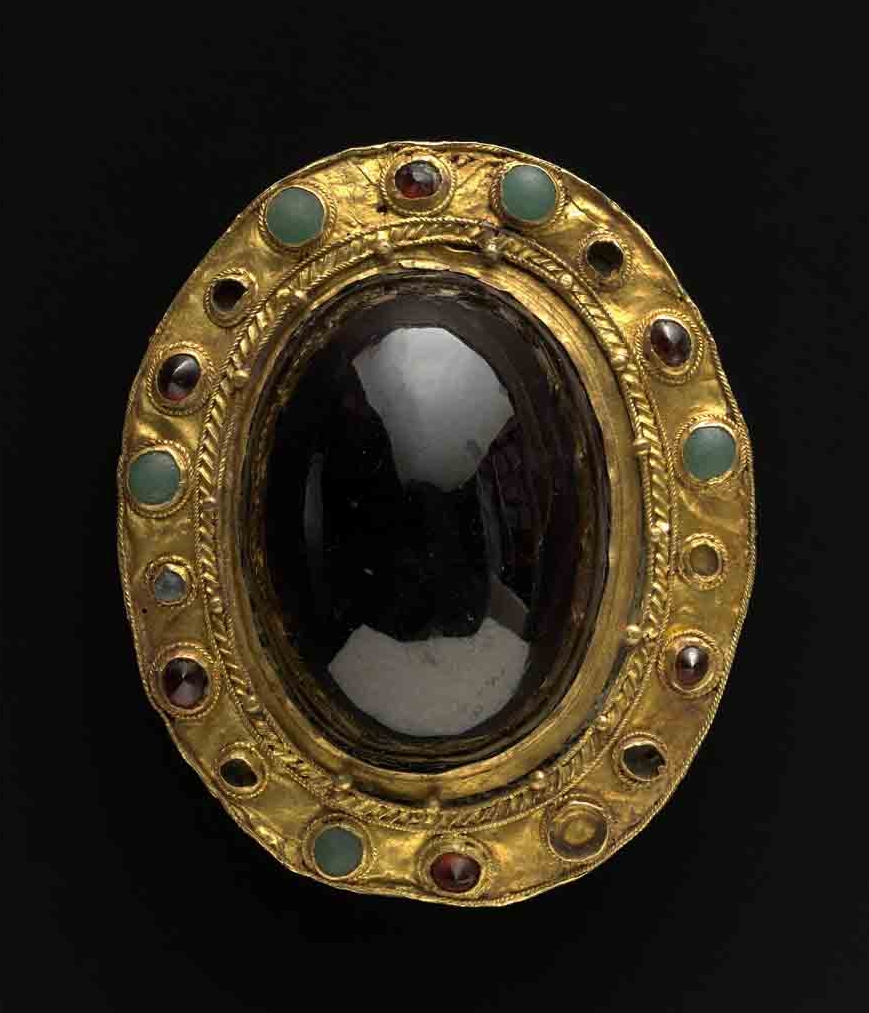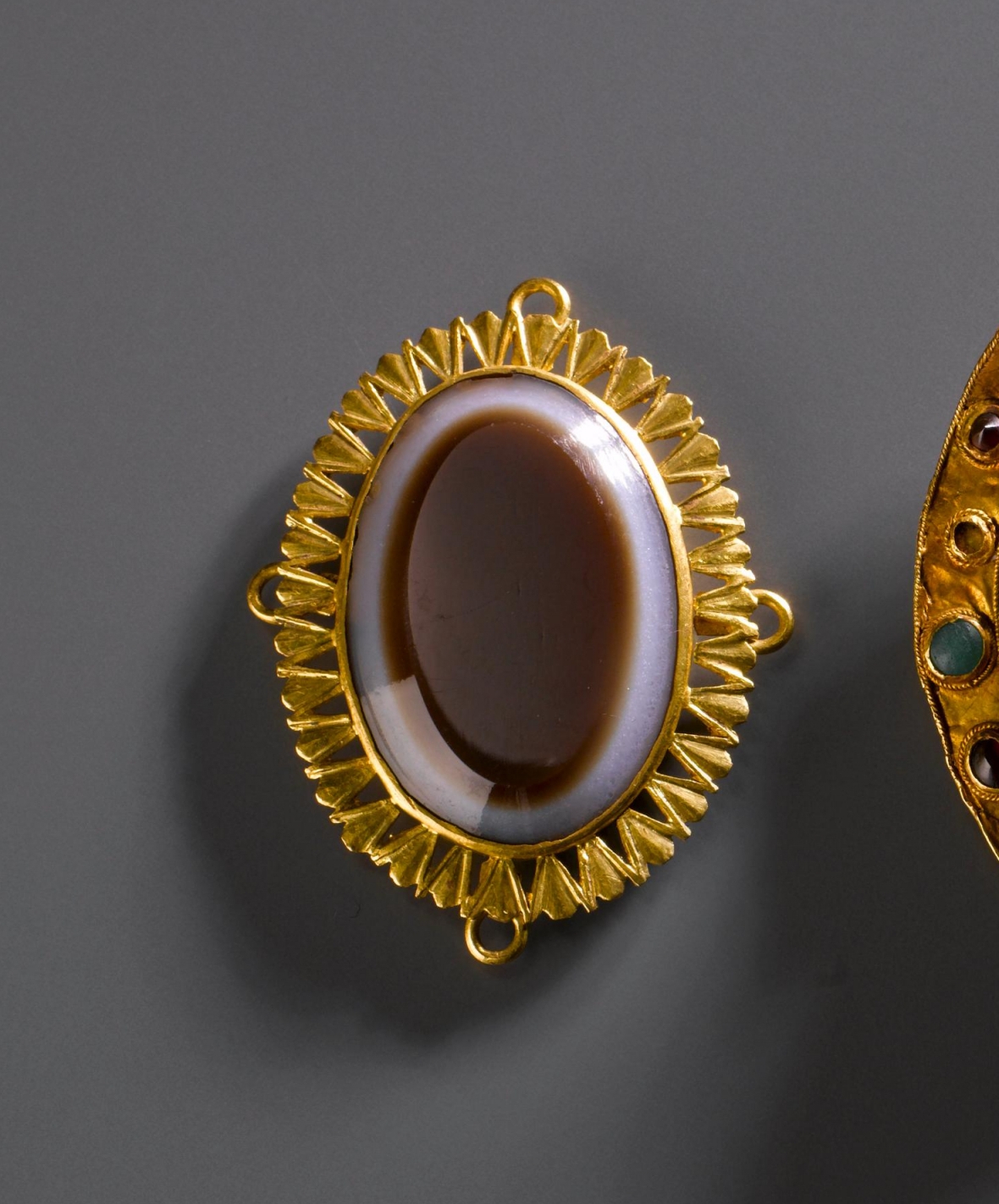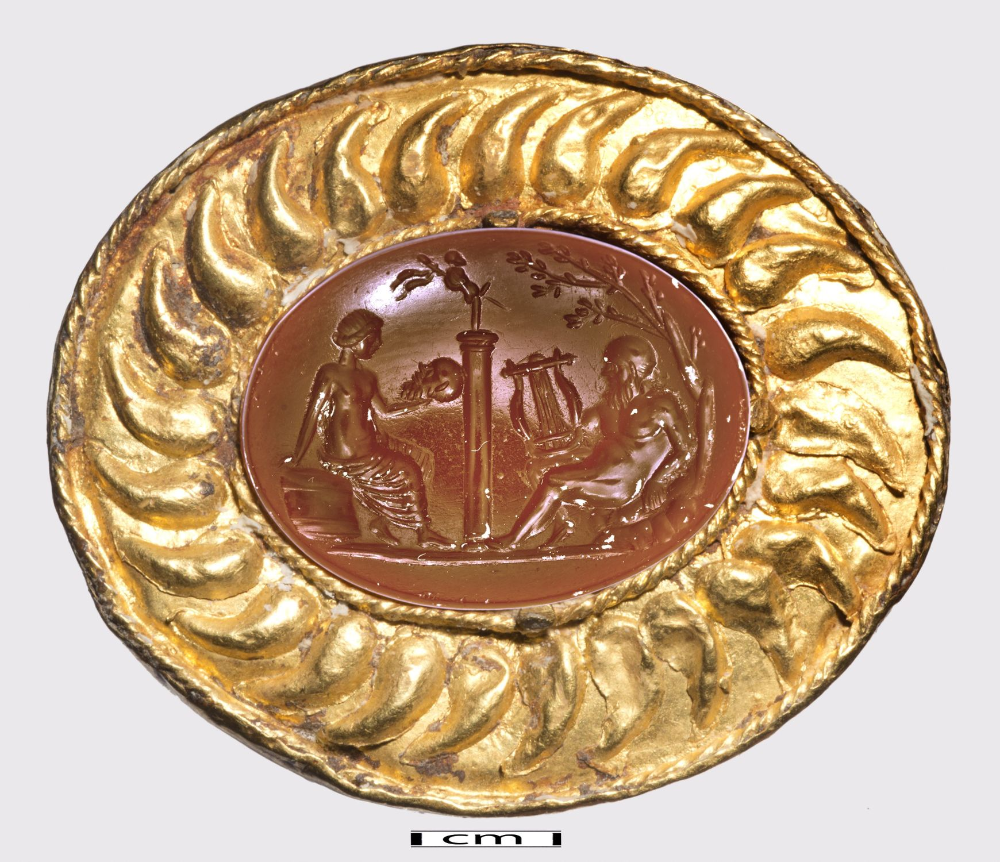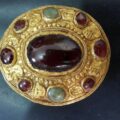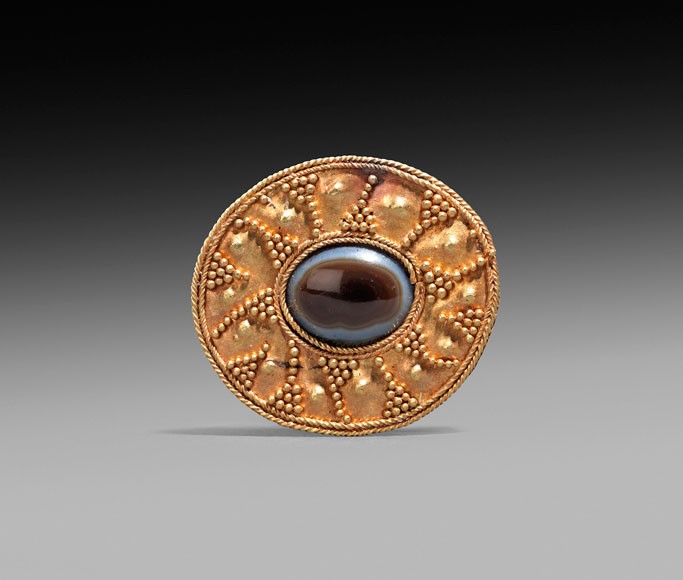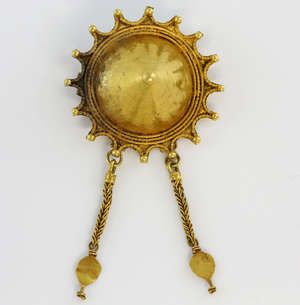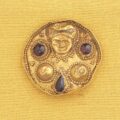
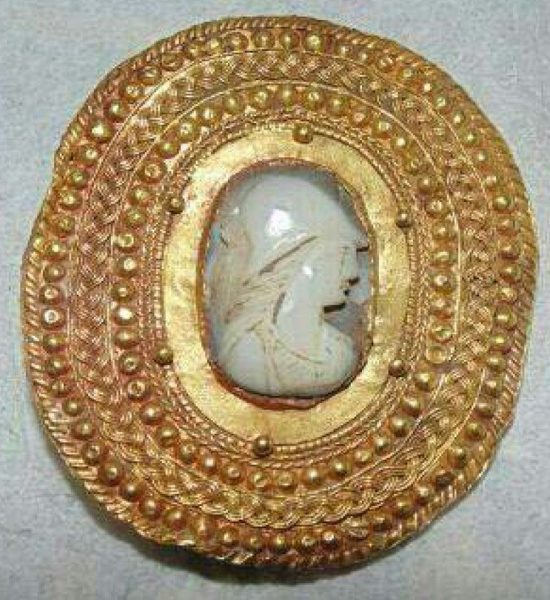





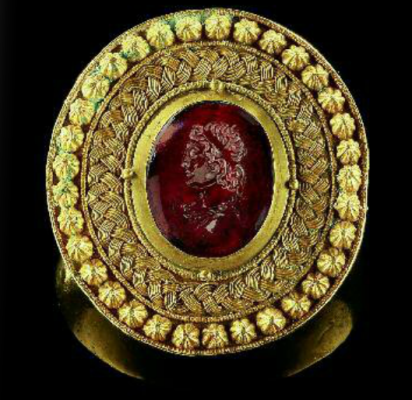



brooch, silver, Roman, 5 BCE–16 CE [read more]

pair of silver gilded brooches, 1-30 CE, Trier [read more]
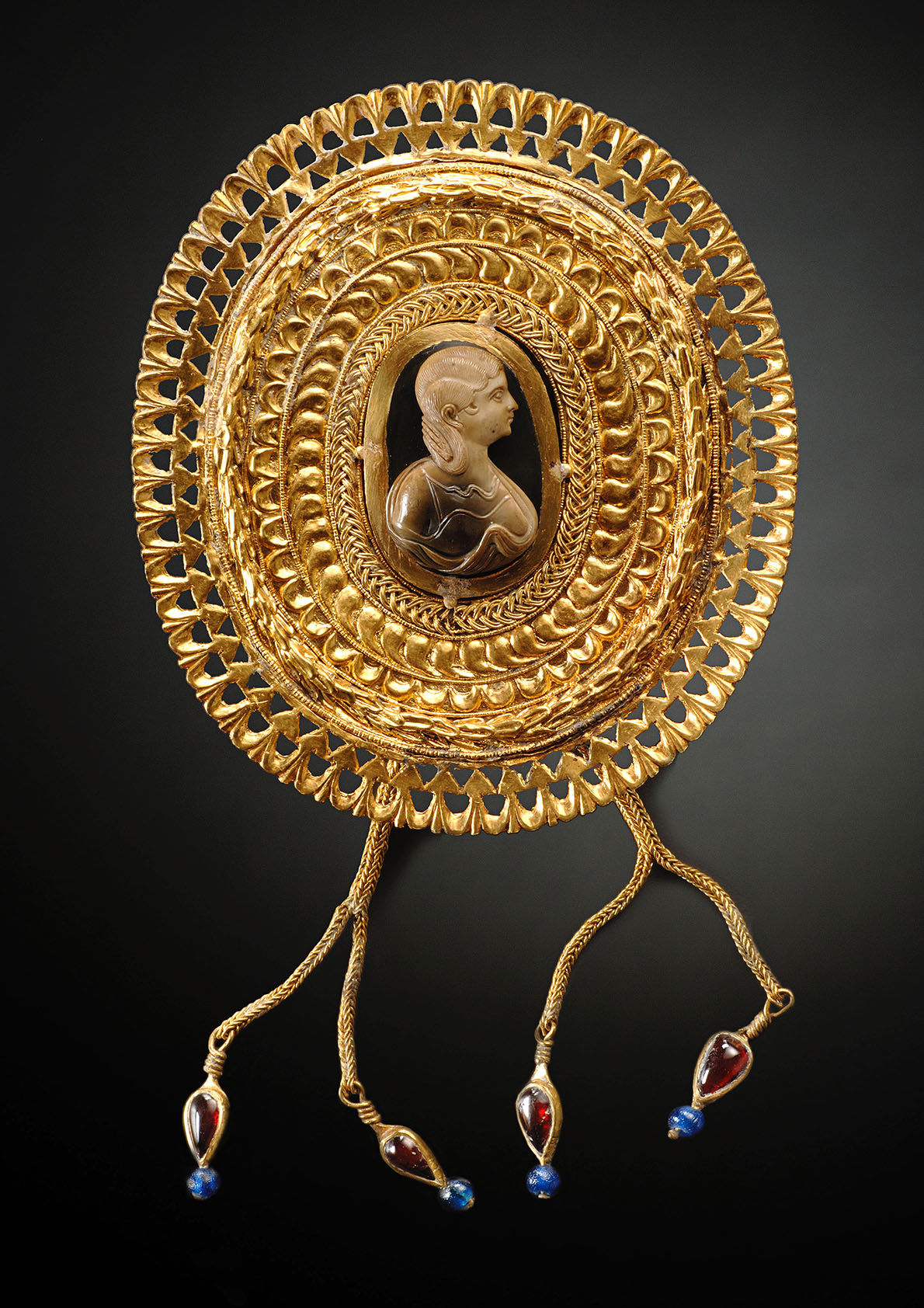
Large fibula with a cameo portrait of Plautilla
Roman, Late 2nd – early 3rd century
Gold, agate, garnet and glass; Dimensions: 9.2 cm x 8.1 cm
https://phoenixancientart.com

Cleveland Art Museum Inv. no. 1977.13




1st-3rd century, from the Villa Borghese, Italy;
gold and carnelian
In the British museum https://www.britishmuseum.org

2nd century https://hermitagemuseum.org ГР-21628
Vallerano necropolis, Tomb 2, 2nd century burial of young woman [read more]
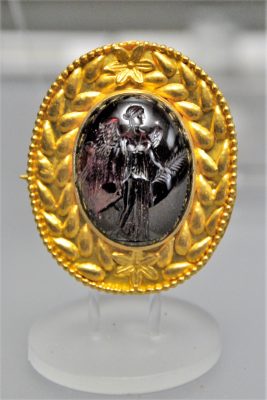
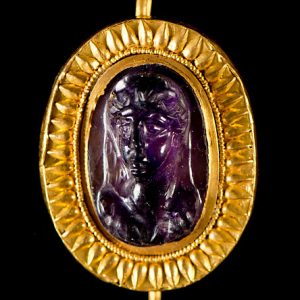
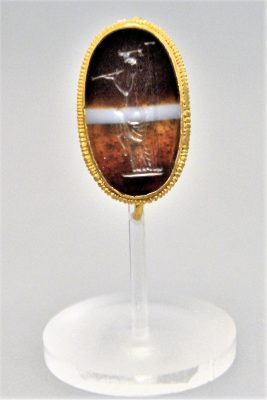
3rd century jewelry from Syria [read more]

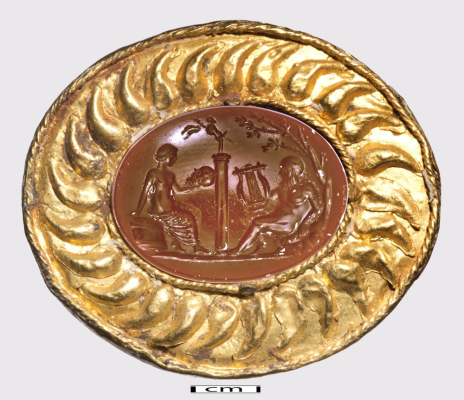
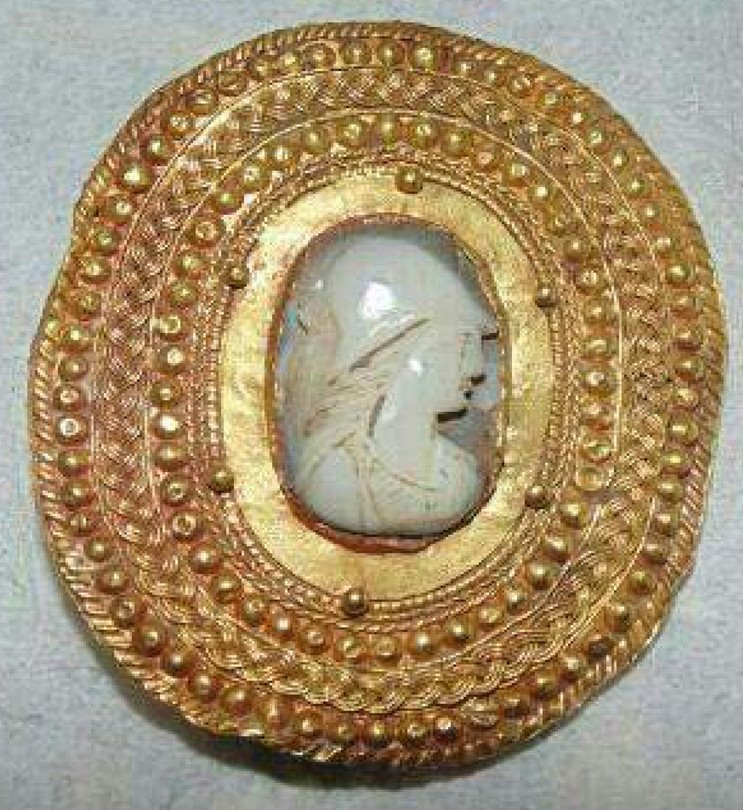
3rd C golden brooch with Minerva / Athena cameo, made in Dura Europos, Syria
This brooch was confiscated to smugglers in the USA
Source: https://www.justice.gov

https://www.blindbild.com/mantua-palazzo-ducale-september-2019/mantua-palazzo-ducala-museo-acheologico-1/

Gold necklace with a pendant with agate cameo portraying goddess Minerva / Athena; second half of 3rd century. Found at the late Roman burial site in Goito along the Via Postumia and currently at the Mantova Archaeological Museum, Italy.
More pictures >> https://www.instagram.com/p/CP0EmR-jTtJ/?img_index=2

https://www.facebook.com

[read more]
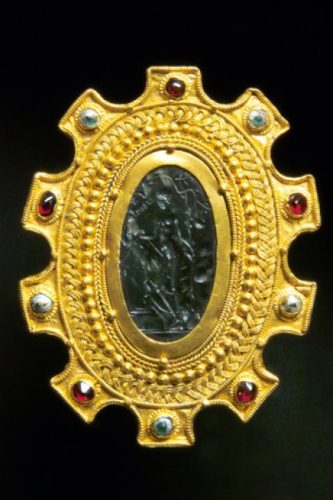
[read more]

Sold on auction Gorny & Mosch GmbH 1998 https://www.gmcoinart.de/gm-katalog-198.pdfx
“Large golden fibula with garnet engraved with the portrait of a hellenistic king with diadem. The front-medaillon which has a very rich decor made of golden wires is from the 1st century B.C. while the back and the needle seems to be from Roman Imperial Times (perhaps 4th century A.D.)“
The gold frame is 2nd-4th century most likely, despite of the auction description.
47,20 g; 4,9 x 4,4 cm
[Thanks to @selflibrarian for a help]

From Darıdere, Tokat, Turkey
The back of the brooch is flat, with two rings soldered on two small square plates. On the cameo, there is a right-facing male bust with a laurel wreath on his head.
Source: Thesis “EXAMINATION OF JEWELRY FOUND IN THE ANATOLIAN CIVILIZATIONS MUSEUM” by Ayşe İpek Kayalar

Roman brooch with cameo portrait of a woman.
Gold and shell, 3rd century CE, from Italy; Lazio. Overall: 3.8 cm
Purchased in Athens, 1926
http://museums.fivecolleges.edu
Photograph Petegorsky/Gipe
MH 1926.4.C.I
http://antiquity.mtholyoke.edu/node/89/index.html

Brooch with a glass cameo, Roman, 2nd-3rd C
https://www.antique-brooches.com A Roman gold and glass cameo brooch Circa 2nd-3rd Century A.D. The oval layered blue and amber glass cameo carved with a sleeping dog, set in a gold mount framed by a band of globular and granule applied decoration with beaded wire outer border, the reverse with a hinged pin and a collection number M186 in red paint, 3.2cm wide. Sold for £3,750 inc. premium at Bonhams in 2016

Brooch with a portrait of Colchian man, gold and carnelian intaglio. Village Kldeeti, Zestafoni Municipality, Region Imereti, Georgia; 2nd century
in GNM

Georgia, Makho, 1st-2nd century
Kept at Batumi Archaeological Museum.
https://www.facebook.com/BatumiArchaelogicalMuseum
Very unusual shape as for Roman brooch – rectangular emerald with pearls on the sides, set in gold. Brooch is small, is 3 cm long. Dated at 2nd-3rd century.

“Catalogue of the jewellery, Greek, Etruscan, and Roman, in the departments of antiquities, British Museum” pdf
Below – a pin or hair ornament, gold hung with emeralds; 1st-4th century
Height: 5.2 cm, Width: 1.2 cm, Depth: 0.6 cm
V&A collection Inv. no. 8802-1863



Tangendorf disc brooch, 3rd C, Germany
In the Hamburg Archaeological Museum https://artsandculture.google.com
“Found near Tangendorf, Toppenstedt, Harburg, Lower Saxony, Germany. The front of the elaborately crafted garment fibula is decorated with a rear-facing four-legged animal, probably a dog or a deer.
The fibula is a multilayered structure. Its face consists of a very thin fire gilded and contoured silver disc, having a diameter of 58 mm. This is fixed by three silver rivet pins to an identically sized, 3 mm thick copper plate and together with this on a stronger silver plate. The rear plate, 78 mm in diameter, is significantly larger. On its rear, the pin was mounted.
The reverse of the front plate was filled with a now whitish green mix of tin, lead and traces of copper in order to support the sensitive friction work and to prevent the pressing of the driven ornaments. But the tin components of the filler have damaged some of the metal parts of the decoration due to allotropic processes forced by low temperatures during long term storage in the soil (tin pest).
The decoration consists of a quadrupedal animal walking to the right, with the animals head facing backwards. It has two ears and a protruding tongue. Around its neck it wears a collar shaped ornament. The legs are positioned under the body to accommodate the round shape of the disc. The background is decorated with irregularly distributed impressions, imitating a granulation. The scene is framed by two ribbed bands, which are enclosed by an ornamental wreath and another ribbed band. Around the body of the animal there are three rosette shaped rivet heads. The body of the animal has a large defect caused by the degenerated tin filling. Some of the protruding edges of the rear mounting plate are broken away. Beneath the copper plate, residual amounts of organic material were found, which were interpreted as ivory. Due to typological comparisons of the ornaments, the fibula was dated to circa 300 AD.” [wiki]






